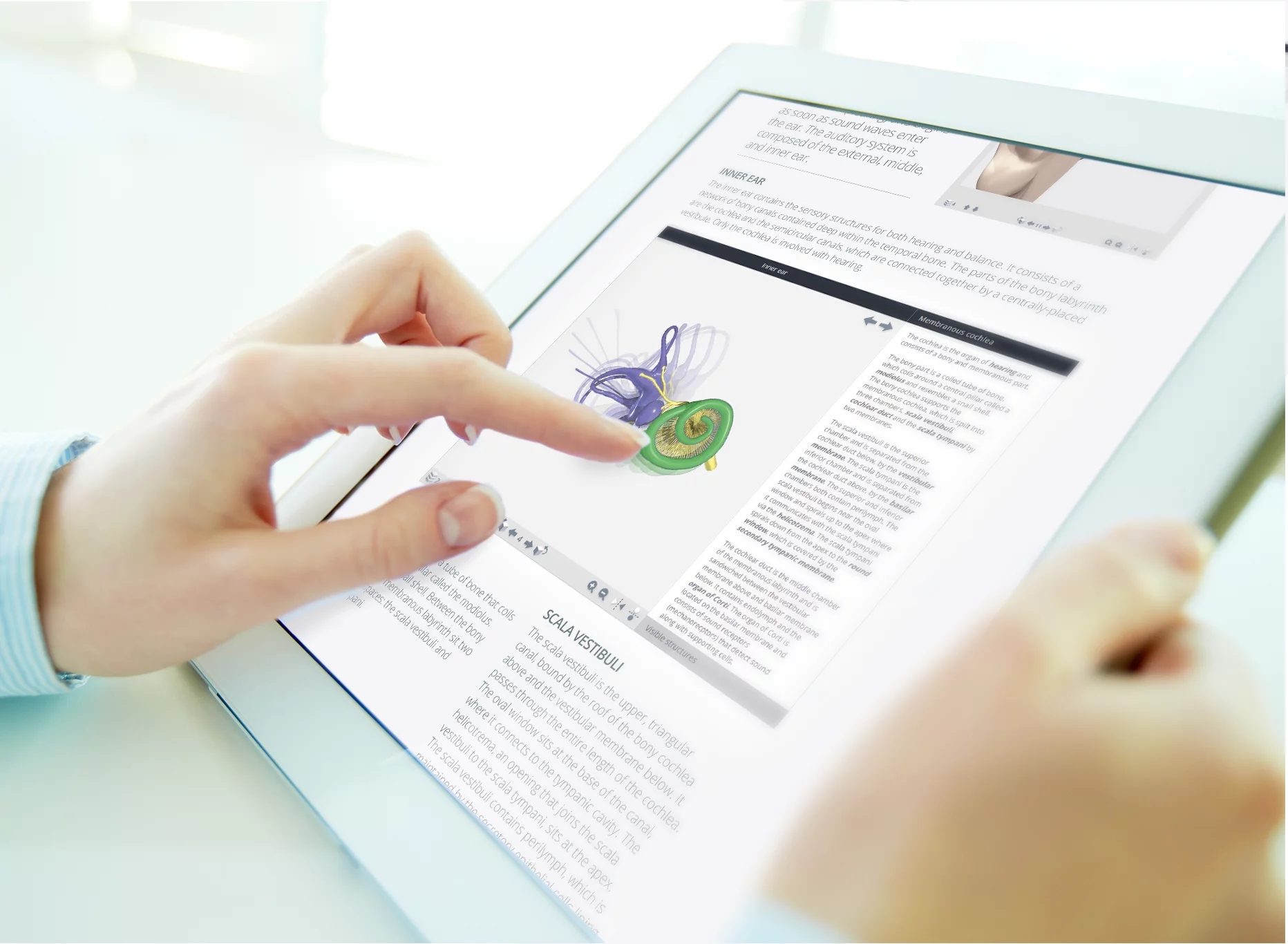The same goes with interactive anatomy content and creating engaging and inspiring online learning environments. Which is why when you asked us to create a function that lets you embed Anatomy.tv content in your online resources directly, we said: “Yes, absolutely.”
In a poll we ran on Anatomy.tv last October, we asked: “Would you like to embed our interactive 3D content directly into your online course materials?” Over 600 of you replied, and a decisive 88% said: “Yes.” Some of you were also kind enough to leave feedback. Comments were anonymous, but the insight was invaluable, so thank you.
The solution is our Embed function, which launched last month. This lets you embed our 3D views, slides, animations, movies, images and quizzes into your Virtual Learning Environments (VLE), Learning Management Systems (LMS) and websites, while retaining the original interactive nature of the content. For example, embed a 3D view, and it retains its layering, rotational and labeling functions.
Embed Custom Interactive Anatomy Content Quickly and Easily
What’s more, the function is quick and easy to use, so no sophisticated coding or programming skills required. Simply click a button to generate an embed code, copy and paste, and that’s it.
In addition to a host of content, we’ve also included several settings, or controls. These give you scope to adapt different media even further across your learning materials, assignments and assessments. For example:
- Select from three viewer sizes: small, medium and large
- Hide or show rollovers and structure titles
- Choose whether to embed structure text alongside your images
- Add a link that launches the full product to give context to your embedded content
What are the advantages of embedding interactive anatomy content?
- User Engagement
By embedding interactive content, you can put a real zing in your online anatomy learning resources, making them more engaging. Using different types of media such as views, slides, animations, movies and quizzes you can also enhance learning and retention, and make more tricky anatomical concepts and relationships easier to understand. As one poll respondent commented: “It would make it easier to visualize structures, and so easier to remember.” - Adaptable
What’s really useful is that you can also select your favorite content and tailor it to a particular learning objective or scenario. Why does this matter? Well, it puts you in the driving seat, enabling you to create resources for different learning styles. As one respondent put it: “This would allow for optimization of the LMS and enhance learning for more visually oriented learners.”
You also get to focus the learning on a specific outcome, with no distractions from other content. Judging by the feedback to our poll you loved this idea, with one respondent saying: “This enables us to limit access to materials outside of the LMS environment and to control the flow and source of information.” - Convenient
There are also practical benefits to embedding all learning and assessment resources in one place. There are no links to mess around with and learners get direct access, so there’s one less thing to click through. In short, the user experience is seamless.
“It would give the students direct access to this Anatomy & Physiology resource along with their other learning resources in one place (their VLE course). It would enable teachers to direct learners to specific Anatomy & Physiology resources of relevance without relying on students to locate the correct resource within Anatomy & Physiology online,” said one respondent. - Measurable
Want to know which of your embedded content is being used and how often? Simple, you can insert additional code to track usage and then use this data to improve your content. If we’re honest, currently this may depend on how familiar you are with making the necessary tweaks to your online platform, but we’re working on it!
To the poll respondent who commented “Wicked, cool, please do it!” we heard you. What’s more, we’re confident that you and everyone else will love what we’ve done.
To get started, visit our Embed function FAQs page. Any questions you can’t find an answer to, just ask in the comments section below. Otherwise, do let us know how you get on and share any feedback you get from your students and other users.
It would be wonderful to embed content directly into LMS. Although texts are prescribed (and many are excellent) students often do not buy them. This means that when explaining a concept to students, especially when considering anatomical relationships having an image that they are able to rotate would be an excellent aid.
